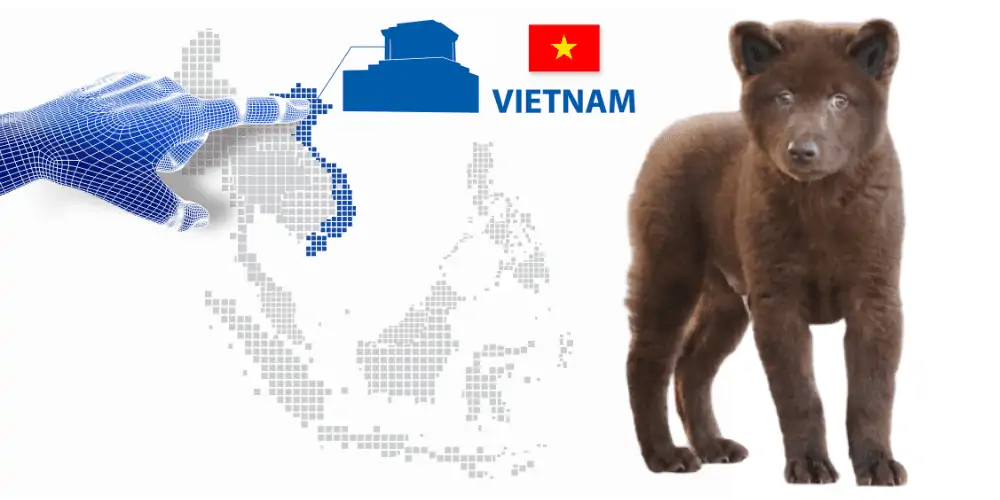Vietnamese dog owners boast different breeds of dogs these days imported from all over the world- not too different from other countries. But there are only four native dogs from Vietnam.
These are the four Vietnamese dog breeds, each a distinct breed:
- The Hmong Dog
- The Bac Ha Dog
- The Lai Dog
- The Phu Quoc Ridgeback
Dog owners in this region often view these breeds as national treasures. In this article, we’ll figure out why that is, discuss these unique breeds from this region, and learn about Vietnam’s native dog breeds.
1. The Hmong Dog
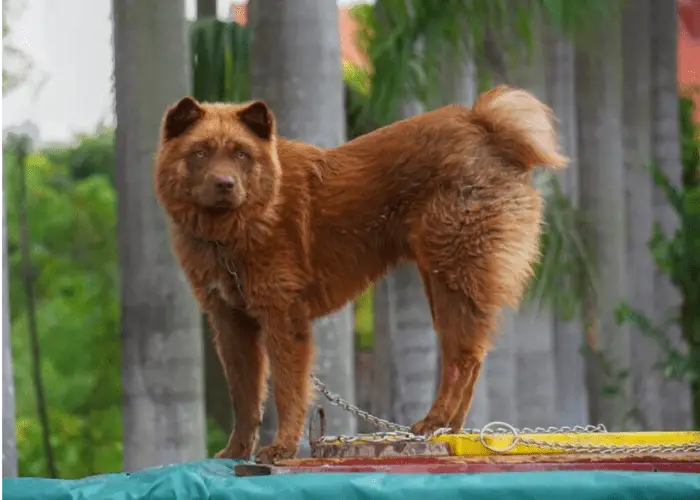
Hmong is pronounced “mong.”
The Hmong Dog a.ka. Hmong docked tail dog is a breed brought to us by the ethnic minority people from the mountain province within Northern Vietnam as well as other surrounding countries of Southeast and Central Asia.
At the time of this article’s creation, the Hmong Dog is among the rarest breeds on the planet, making this dog one of Vietnam’s best-kept secrets.
They are easily recognizable with their short tails. If one didn’t know any better, they would assume that the dog’s tail had been docked rather than being a short tail dog. ( image source )
Also, they have been known to carry a gene mutation that occurs from time to time in a litter, causing them to have a bit of a Corgi appearance more than others without this mutation.
An excellent example of this can be viewed at dúi’s fan page, where his pup is displayed by his owners, Hai Anh and Tuan, who are playing an essential role in bringing attention to the breed.
In ancient times, it is believed that they came to be through the natural selection of wild dogs (breed unclear), with wolves that dwelt in the jungles scattered through the region.
They bear their name after the Hmong people scattered throughout mid to southern Asia, who took this breed in and utilized it for its strengths, and companionship. The Hmong Dog’s instincts support the wild lineage, making them natural hunters.
They seemed ready to abandon the ways of wild animals or being a primitive breed and exchange them for a hunting companion, an all-natural compass for travelers, and a pet dog.
Vietnamese Hmong Dog Temperament
Generally speaking, this is a friendly breed that enjoys spending time with its owners and family. However, it is extremely over-protective and territorial. Early and often training is necessary to curb these instincts.
Even though this dog is nicknamed the “cat-dog” by the Vietnamese, they generally hate cats- enough to be extremely aggressive toward them. These traits are not uncommon with dogs that instinctively come equipped to hunt.
Did You Know?
- The VKA (Vietnam Kennel Association) officially recognizes the Hmong dog as its distinct breed, with official breed standards.
- In the Vietnam Native Dog Club, the Hmong is presented with its own annual national dog show.
- Hmong dog price can cost around $3,000 on average to buy like other rare dog breeds.
2. The Bac Ha Dog
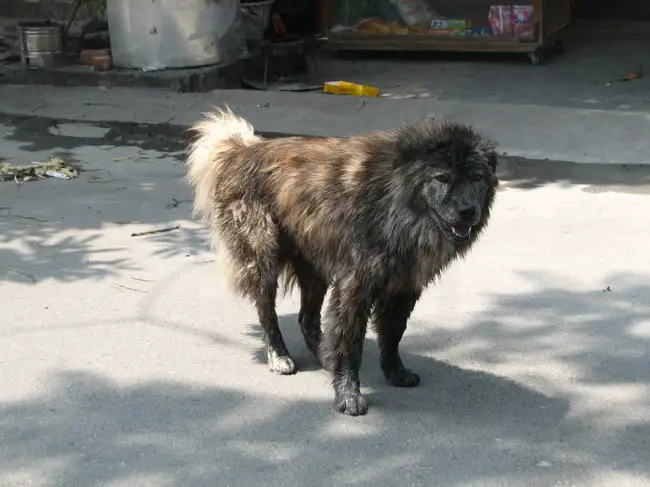
Bac Ha is pronounced “ba-ha”
The Bac Ha Dog breed stems from the mountainous regions of Bac Ha in Lao Cai Province.
Originally, these powerful dogs were domesticated, bred, and groomed for hunting and guarding dogs of both man and beast. ( image source )
They weren’t shepherd-type dogs but did their duty keeping them safe from predators. A thick coat of fur can be spotted on most breed varieties and can be found in many coat colors.
Overall Temperament
Bac Ha dogs are strong hunters, and they developed a very wide girth of territory to explore, hunt within, or protect, rather than being restrained to a small penned-in yard.
This breed isn’t a dog that will withstand being couped up for too long. They are tightly woven in temperament to their hunting ancestry and frequently seek to roam freely.
Though their weariness of strangers may be viewed as a good thing when used as a guard dog or companion over long treks, it can be an issue when these situations aren’t necessary. They have been known to attack strangers when the conditions are right.
With the family, caution must be taken with this breed around small children if introduced to the family as an older puppy or as an adult.
Raising it from a puppy is the best possible way to avoid any issues with family members or strangers, for that matter. Owners play a large part in their dog’s success in training.
The Bac Ha Breed can be a no-nonsense, hard-nosed worker on the one hand but a chipper, loving dog on the other. They can be playful and extremely loyal companions for the right owners. They enjoy running around, playing and otherwise having fun.
Some deep exploration should go into the breed before getting your hands on one to ensure it’s the right fit for your family or living situation.
Did You Know?
- The Bac Ha dog is an extremely intelligent, loyal breed of dog that is easy to train and very disciplined – they make good pets for first-time dog owners.
3. The Lai Dog
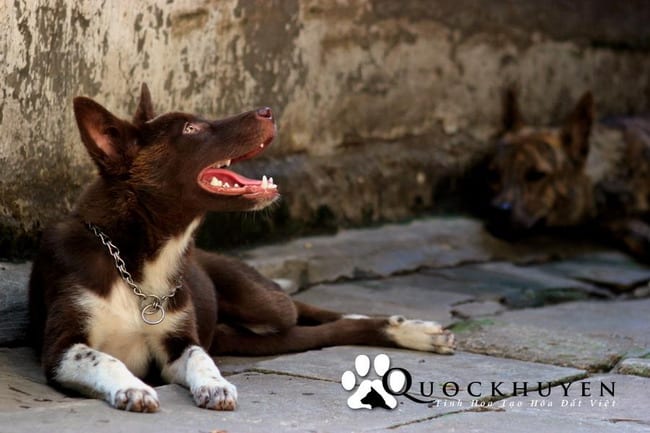 Lai is pronounced as it is spelled “lai.”
Lai is pronounced as it is spelled “lai.”
Often referred to as the Indochina Dingo, The Lai Dog wasn’t only revered by their ancient owners; at one point, they were all-out worshipped by Dai Viet Warriors. (image source )
Ancient artifacts have been unearthed (including tombs for these warrior pets) bearing likenesses of these medium-sized, diverse dogs.
That was then. Today, this breed isn’t as popular as they once were, particularly due to other breeds being introduced from different parts of the world, making them rare.
However, efforts are being made in Vietnam to stimulate this breed out of the grip of near extinction.
Regarding genetics, it is believed that this is a mix of a native dog breed (Mong dogs in particular) with the local Vietnamese wolf population.
This is believed to have happened either through natural processes or because of the treatment of the occupying French colonials, which would leave the fate of the Mong people’s dogs to the wolves.
Overall Temperament
This breed is generally a calm, reserved, and visually expressive dog. They’re loyal dogs who love their owners and family members, but some special attention has to come into play regarding children.
This is not a first-time owner breed to tackle.
Dingo Indochina is historically known to be both “kind and cruel”- they played a part alongside their warrior owners in battle, were hunters, and were excellent guard dogs. This means the instincts have to be curbed to bring the dog up as a family pet.
Did You Know?
- The Dingo Indochina’s white paws are often called “socks.”
- The Dingo Indochina is one of the lesser-known Asian hunting dogs from Vietnam
4. The Phu Quoc Ridgeback
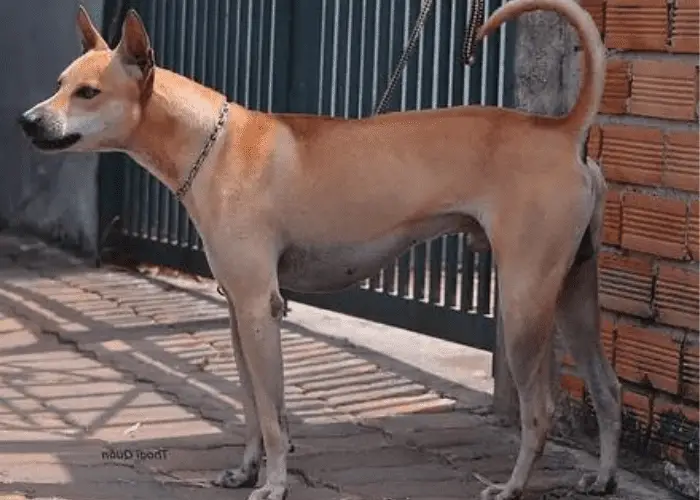
Phu Quoc is pronounced “fu-qua.”
Did their ridge come from the first King of Vietnam, King Gia Long, on his retreat to Phu Quoc Island? Well, that’s what the legends say. (image source)
From the Island of Phu Quoc in Kiên Giang Province (Southern Vietnam) hails the Vietnamese Phu Quoc Ridgeback.
This is one of three Ridgeback breeds that exist today, with the others being the Rhodesian Ridgeback and Thai Ridgeback. All three share the same trait- a ridge of hair going in the opposite direction of the natural grain of the coat.
A fourth is kept from this club simply due to semantics- the uniquely haired Cambodian Razorback. Similar coat features, different names.
To date, the Phu Quoc dog is one of the rarest and most expensive dogs worldwide. Catherine Lane is the first in Europe to breed Phu Quoc Ridgeback dogs and sells her pups for over USD 11,000!
Once recognized as an Asian village dog, there is very little that this breed can’t do.
- They have flexible cat-like bodies that are quick and agile.
- Their feet are webbed, making them better swimmers than other breeds.
- They can easily climb trees and other objects when other breeds look up, wondering how to get up there.
- This Ridgeback can use its senses to follow a hot or cold trail.
- And most predictably, the breed standard- a ridge of fur going up the spine, giving it that “Ridgeback” feature.
- Their tongue sports black spots, and their fur can come in various colors.
- They have short, tight coats that allow them to deal with intense heat.
General Temperament
The Vietnamese Ridgeback has a calm and regal demeanor and often makes for good pet. They are also an inquisitive breed.
Though they are a loving family member, always ready to display affection, they are protective and fearless. They do enjoy stretching their long legs, so exercise is required.
These purebred dogs are social animals who need companionship with their owners but tend to have an independent streak.
Did You Know?
- Due to their rarity, the Phu Quoc dog is not officially recognized by any international bodies, and no official breed standard has ever been set.
- In 2018, the Phu Quoc dog was recognized as the mascot of the Ho Chi Minh Flower Show.
Final Thoughts
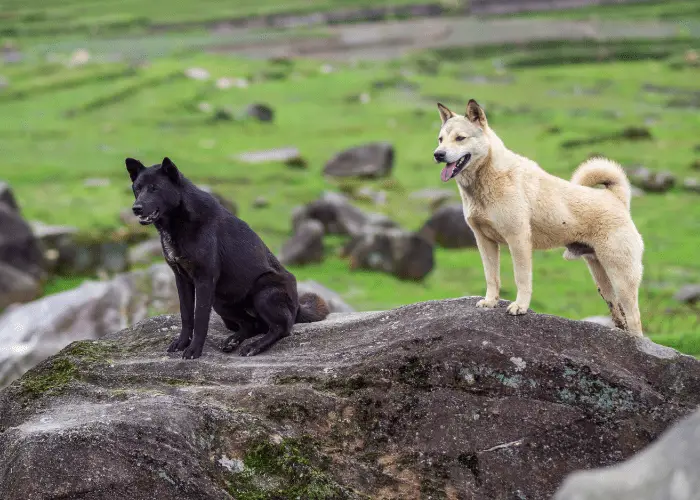
So, there are four national dog breeds in Vietnam.
They can be spotted at the Hanoi Dog Show or any annual national dog show held by the Vietnam Kennel Association or other outfits.
They all have their strengths and weaknesses- not unlike different dog breeds. Some make ideal pets and have been for a long time. While others, well, not so much, are better used in their strengths. Some suffer health problems that others don’t, etc.
None of these would be a popular dog breed in an apartment setting, but they would nestle nicely in rural settings or places with acreage.
For the record, Vietnam does share a place on the list of countries that consume dog meat, and this is fodder for cliches and rumors that have peppered many countries around Southeast Asia, with tales being told of it since the 19th century.
This is true today, as three or four places in Ho Chi Minh City have dogs on their menu to cater to these folks.
Most local people don’t partake. However, though Vietnam comes in second on this list, the number of Vietnamese people doing it is few, localized to a few sparse ethnic groups within different regions of the country.
Check Out More Asian Dog Breeds Below:

